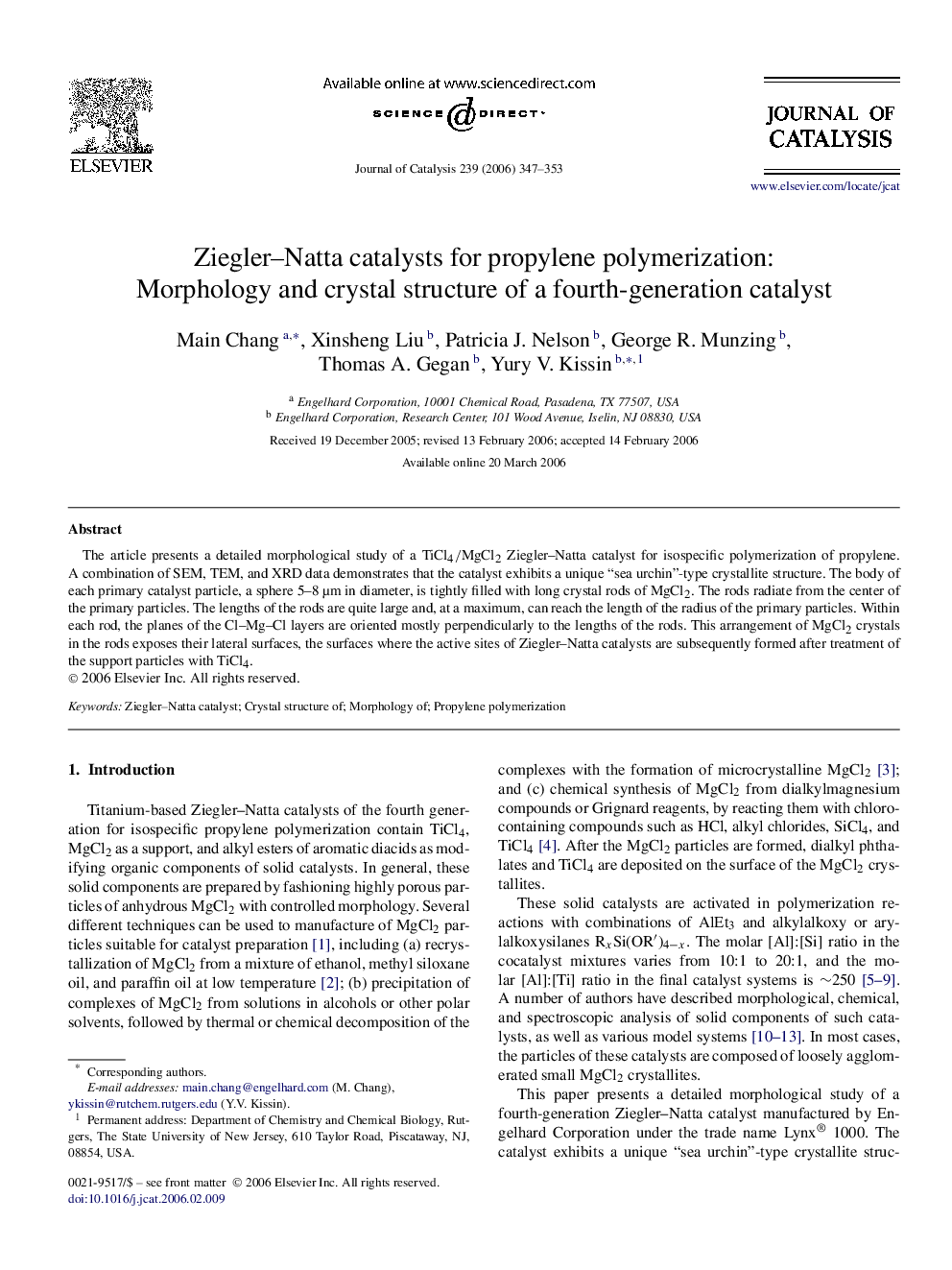| Article ID | Journal | Published Year | Pages | File Type |
|---|---|---|---|---|
| 63286 | Journal of Catalysis | 2006 | 7 Pages |
The article presents a detailed morphological study of a TiCl4/MgCl2 Ziegler–Natta catalyst for isospecific polymerization of propylene. A combination of SEM, TEM, and XRD data demonstrates that the catalyst exhibits a unique “sea urchin”-type crystallite structure. The body of each primary catalyst particle, a sphere 5–8 μm in diameter, is tightly filled with long crystal rods of MgCl2. The rods radiate from the center of the primary particles. The lengths of the rods are quite large and, at a maximum, can reach the length of the radius of the primary particles. Within each rod, the planes of the Cl–Mg–Cl layers are oriented mostly perpendicularly to the lengths of the rods. This arrangement of MgCl2 crystals in the rods exposes their lateral surfaces, the surfaces where the active sites of Ziegler–Natta catalysts are subsequently formed after treatment of the support particles with TiCl4.
